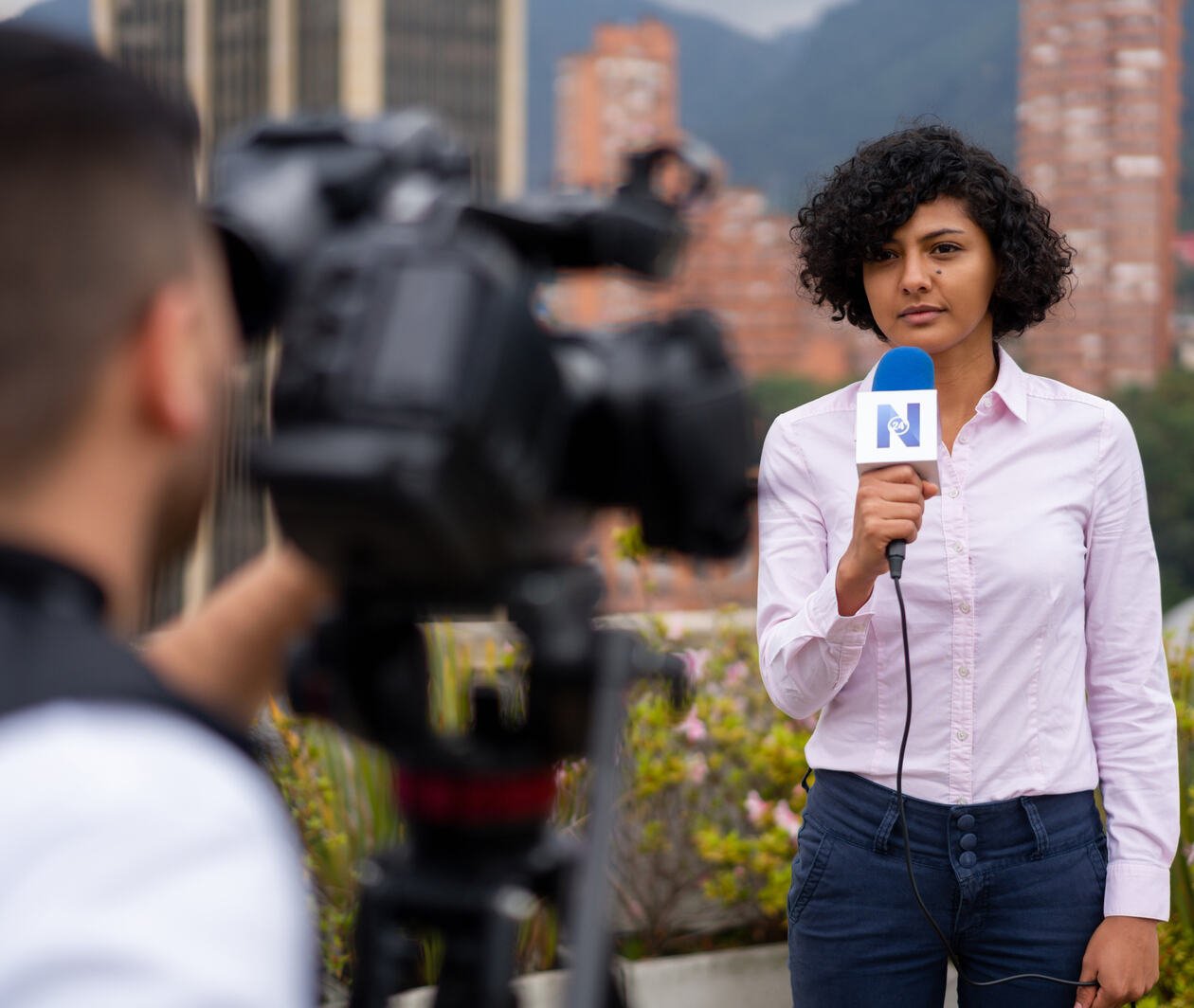Duration
4 weeksWeekly study
3 hours100% online
How it works
A Reporter’s Toolkit for the Digital Age
Enhance your skills as a news reporter
With so much of our news now consumed online, it’s important to know how digital journalism differs from traditional forms.
On this four-week course, you’ll increase your understanding of the essential ingredients for good reporting and how to apply this to online journalism.
This practical course will take you through a variety of exercises including how to pick the best stories for different target audiences, how to write a news story from information and quotes, and writing other forms of journalism to build your skills.
Explore the value of community news
You’ll examine what it means to have different communities reflected in the news and the impact this has on society.
Drawing from your own experiences, you’ll discuss how far you have seen various communities represented in the news before learning how reporters create this type of story.
You’ll also have the opportunity to create a story about your community or area of special interest.
Examine the power of social media in reporting and journalism
Social media has undoubtedly changed the way we report and consume news.
You’ll explore how news platforms use social media in reporting and what makes an engaging post without being ‘clickbait’.
As well as this, you’ll examine how news outlets use social media to pick up stories, interviewees, and case studies.
Explore the realms of digital journalism
Finally, you’ll explore the power of the personal story.
You’ll examine the attraction and also the danger of people telling their own stories before taking the opportunity to create your own piece of personalised journalism.
What topics will you cover?
- Essential ingredients for good reporting
- Developing news judgement
- Reflections on different communities being represented in the news
- Power of social media
- Impartiality and personal news stories
When would you like to start?
Start straight away and join a global classroom of learners. If the course hasn’t started yet you’ll see the future date listed below.
Available now
Learning on this course
On every step of the course you can meet other learners, share your ideas and join in with active discussions in the comments.
What will you achieve?
By the end of the course, you‘ll be able to...
- Summarise the essential ingredients of good reporting
- Develop news judgement
- Reflect on different communities being represented in the news
- Discuss the power of social media
- Explore impartiality and personal news stories
Who is the course for?
This course is designed for anyone with an interest in media reporting.
It will be of particular interest if you are an aspiring journalist or writer.
If you want to further your subject knowledge, you may also be interested in these courses. They’re from the same provider and share similar overall learning outcomes:
Ways to learn | Buy this course | Subscribe & save | Limited access |
|---|---|---|---|
| Choose the best way to learn for you! | $134/one-off payment | $39.99/month Automatically renews | Free |
| Fulfill your current learning need | Develop skills to further your career | Sample the course materials | |
| Access to this course | tick | tick | Access expires 18 May 2024 |
| Access to 1,000+ courses | cross | tick | cross |
| Learn at your own pace | tick | tick | cross |
| Discuss your learning in comments | tick | tick | tick |
| Tests to check your learning | tick | tick | cross |
| Certificate when you're eligible | Printed and digital | Digital only | cross |
Cancel for free anytime |
Ways to learn
Choose the best way to learn for you!
Subscribe & save
$39.99/month
Automatically renews
Develop skills to further your career
- Access to this course
- Access to 1,000+ courses
- Learn at your own pace
- Discuss your learning in comments
- Tests to boost your learning
- Digital certificate when you're eligible
Cancel for free anytime
Buy this course
$134/one-off payment
Fulfill your current learning need
- Access to this course
- Learn at your own pace
- Discuss your learning in comments
- Tests to boost your learning
- Printed and digital certificate when you’re eligible
Limited access
Free
Sample the course materials
- Access expires 18 May 2024
Find out more about certificates, Unlimited or buying a course (Upgrades) | |||
Find out more about certificates, Unlimited or buying a course (Upgrades)
Learning on FutureLearn
Your learning, your rules
- Courses are split into weeks, activities, and steps to help you keep track of your learning
- Learn through a mix of bite-sized videos, long- and short-form articles, audio, and practical activities
- Stay motivated by using the Progress page to keep track of your step completion and assessment scores
Join a global classroom
- Experience the power of social learning, and get inspired by an international network of learners
- Share ideas with your peers and course educators on every step of the course
- Join the conversation by reading, @ing, liking, bookmarking, and replying to comments from others
Map your progress
- As you work through the course, use notifications and the Progress page to guide your learning
- Whenever you’re ready, mark each step as complete, you’re in control
- Complete 90% of course steps and all of the assessments to earn your certificate
Want to know more about learning on FutureLearn? Using FutureLearn
Do you know someone who'd love this course? Tell them about it...
More courses you might like
Learners who joined this course have also enjoyed these courses.
Browse more in Creative Arts & Media

